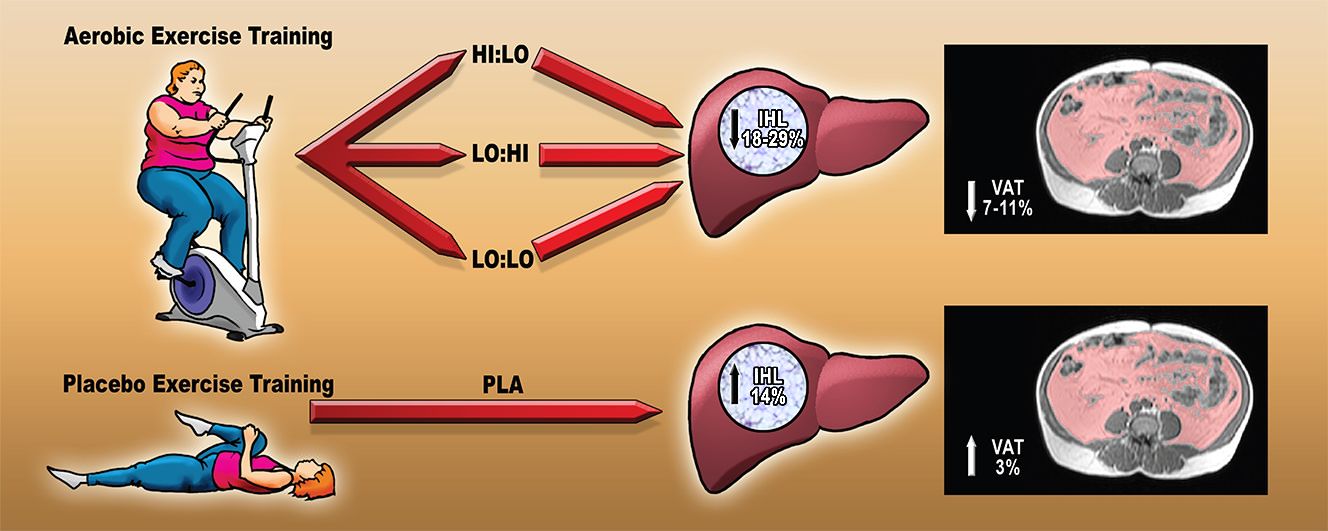
In general, a sustained negative energy balance is required to achieve significant fat loss, so that the body uses its stores of body fat for energy.
This is normally achieved through lifestyle changes (usually diet with or without exercise) and results in a loss of total body fat. The concept of ‘spot reduction’ - i.e. targeting an area of the body, for example the arms or thighs, is for the most part a myth. Fat loss tends to be generalised and depends on the total caloric deficit.
However, we now know that the location of excess body fat, rather than the total quantity of fat, is more important when determining the health risks associated with obesity. Excess fat stored in and around the internal organs (e.g. abdominal visceral fat, liver fat, pancreatic fat and fat stored inside the muscles) are particularly detrimental to health.

The good news is that lifestyle therapy (including both diet and exercise) plays an important role in reducing body fat, and in particular intra-abdominal fat.
In a 2015 study I was a co-author on, we found regular aerobic exercise significantly reduced both visceral and liver fat, without significant weight loss. This is important as it shows that just eight weeks of exercise can reduce these metabolically-detrimental fat depots, despite no significant changes on the scales.
So, in regards to the question, ‘can you target fat loss to a specific area of the body’? The answer is with regular aerobic exercise you can reduce intra-abdominal and liver fat, without overall changes to body weight or total fat mass.
 AUTHOR: Dr Shelley Keating is an NHMRC Early Career Fellow at UQ’s School of Human Movement and Nutrition Sciences. As an Accredited Exercise Physiologist, her research explores the role that exercise plays in the management of obesity and obesity-related chronic disease, with a focus on non-alcoholic fatty liver disease (NAFLD). Shelley’s current research interests include the utility of high intensity interval training (HIIT) for the management of obesity, type 2 diabetes and non-alcoholic steatohepatitis.
AUTHOR: Dr Shelley Keating is an NHMRC Early Career Fellow at UQ’s School of Human Movement and Nutrition Sciences. As an Accredited Exercise Physiologist, her research explores the role that exercise plays in the management of obesity and obesity-related chronic disease, with a focus on non-alcoholic fatty liver disease (NAFLD). Shelley’s current research interests include the utility of high intensity interval training (HIIT) for the management of obesity, type 2 diabetes and non-alcoholic steatohepatitis.



